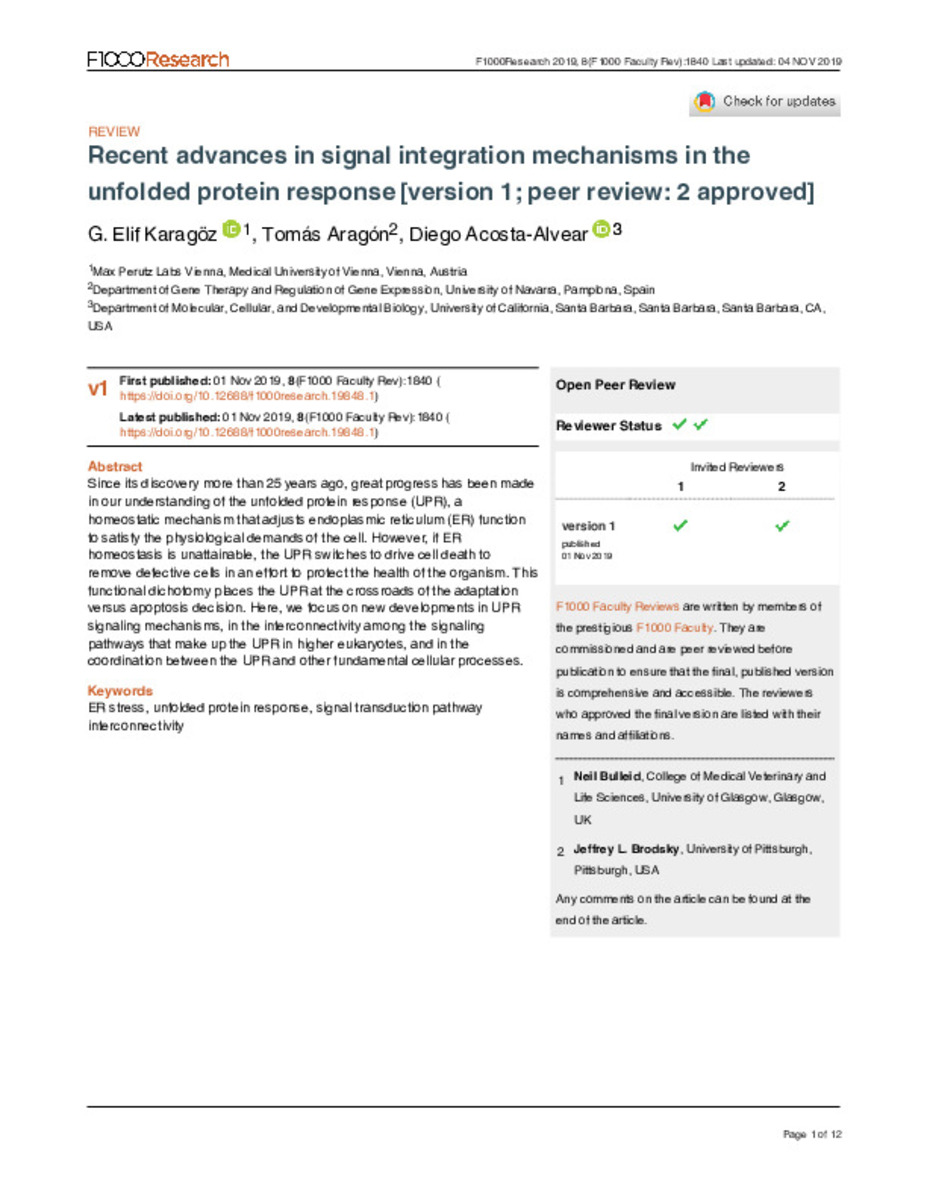Recent advances in signal integration mechanisms in the unfolded protein response [version 1; peer review: 2 approved]
Keywords:
ER stress
Unfolded protein response
Signal transduction pathway interconnectivity
Publisher:
Taylor & Francis
Note:
This is an open access article distributed under the terms of the Creative Commons Attribution License, which permits unrestricted use, distribution, and reproduction in any medium, provided the original work is properly cited.
Citation:
Karagöz, G.E. (Gulsun Elif); Aragón-Amonárriz, T. (Tomás); Acosta-Alvear, D. (Diego). "Recent advances in signal integration mechanisms in the unfolded protein response [version 1; peer review: 2 approved]". F1000Research. 8, 2019, 1840
Statistics and impact
0 citas en

0 citas en

Items in Dadun are protected by copyright, with all rights reserved, unless otherwise indicated.







